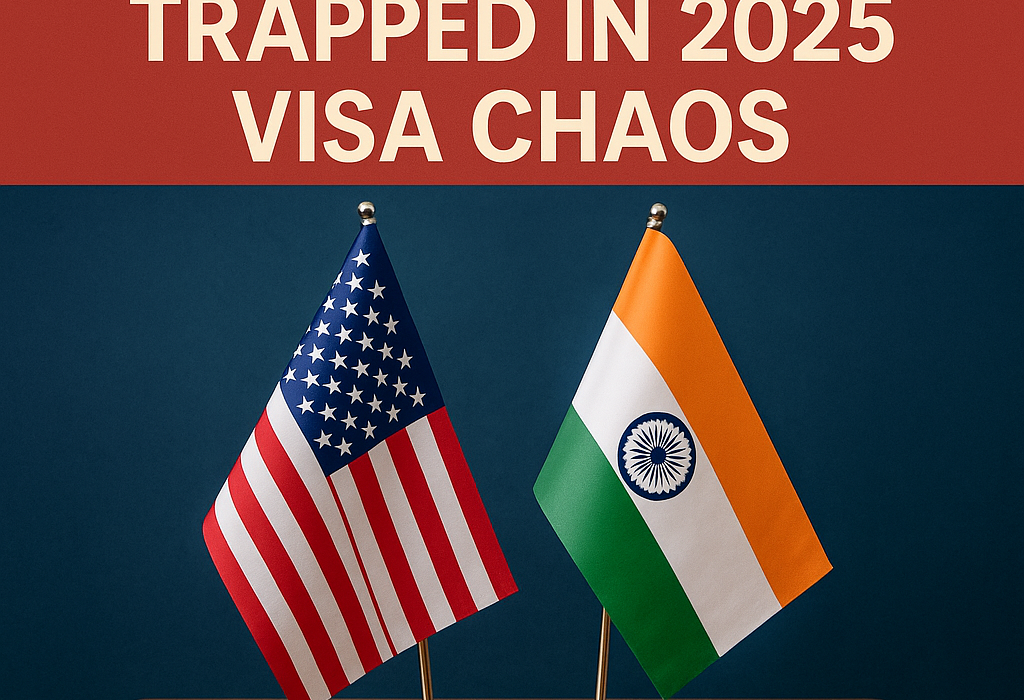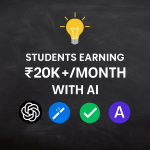Introduction
Indians and especially students looking to study in USA by the year 2025 are expected to face unprecedented issues in realizing their goals. It stems from U.S. President Donald Trump’s ominous executive order on visa restrictions. This is baffling for thousands of prospective students enrolled in various colleges and universities in India. Amidst all this, the perplexing silence maintained by the Prime Minister of India raises even more questions.
This blog will analyze these visa restrictions specifically from the viewpoint of Indian students, The Indian Government response, or more accurately, lack of response, is another facet of the issue that seems to be attracting public scrutiny. As we will see, there is a wider geo-political phenomena at play, student’s case studies, suggestions for students, policy makers and educational bodies will also be provided.
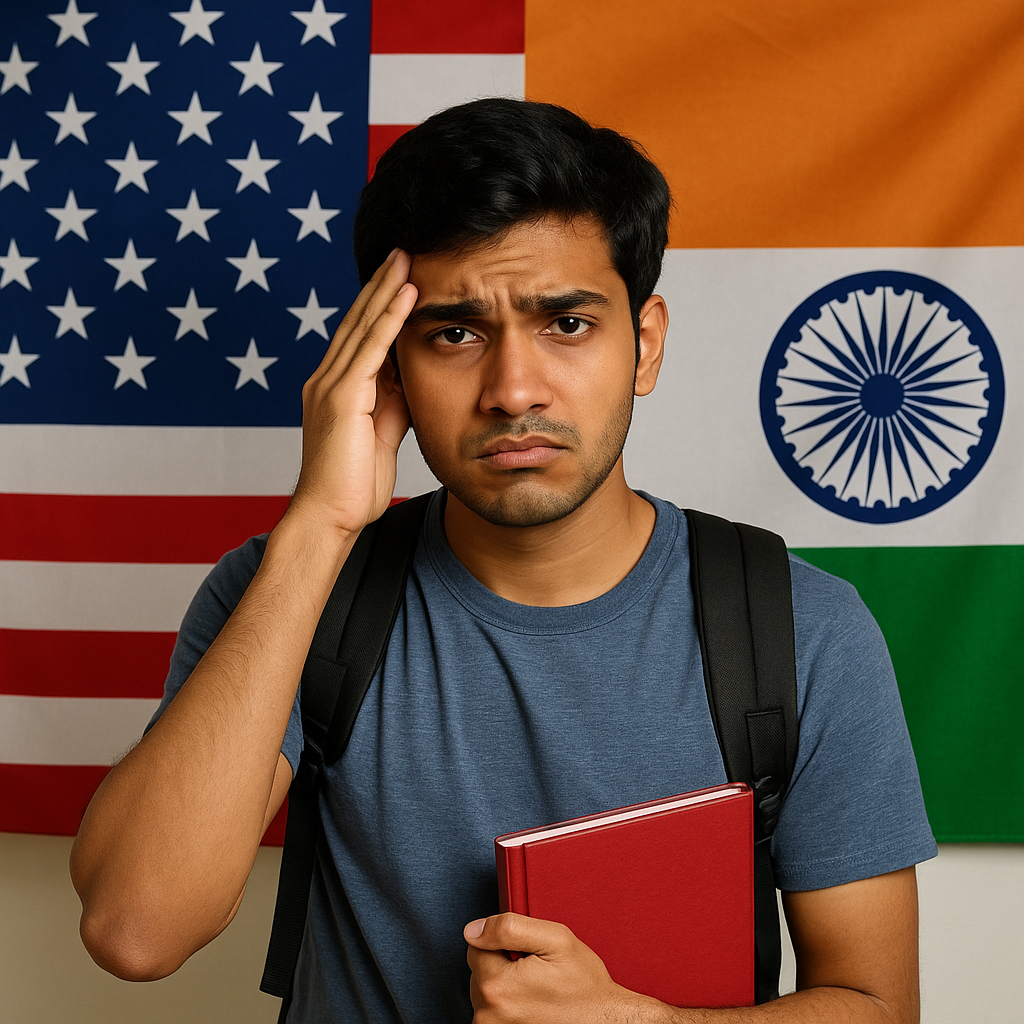
What Are The New Visa Curbs Announced By Trump In 2025?
Summary of the executive order:
In May 2025, Trump administration set forth an executive order that included Disability Australia’s For :
- Stricter background checks for F1 and J1 visas.
- Suspension of Optional Practical Training (OPT) for STEM students.
- Amended allotment of visas to high risk countries including India.
- Tightened renewal of student visa policy.
- Mandatory biometric data acquisition.
According to the U.S. Department of State, F1 and J1 student visas now include stricter background checks and revised policies affecting international students from high-risk countries.
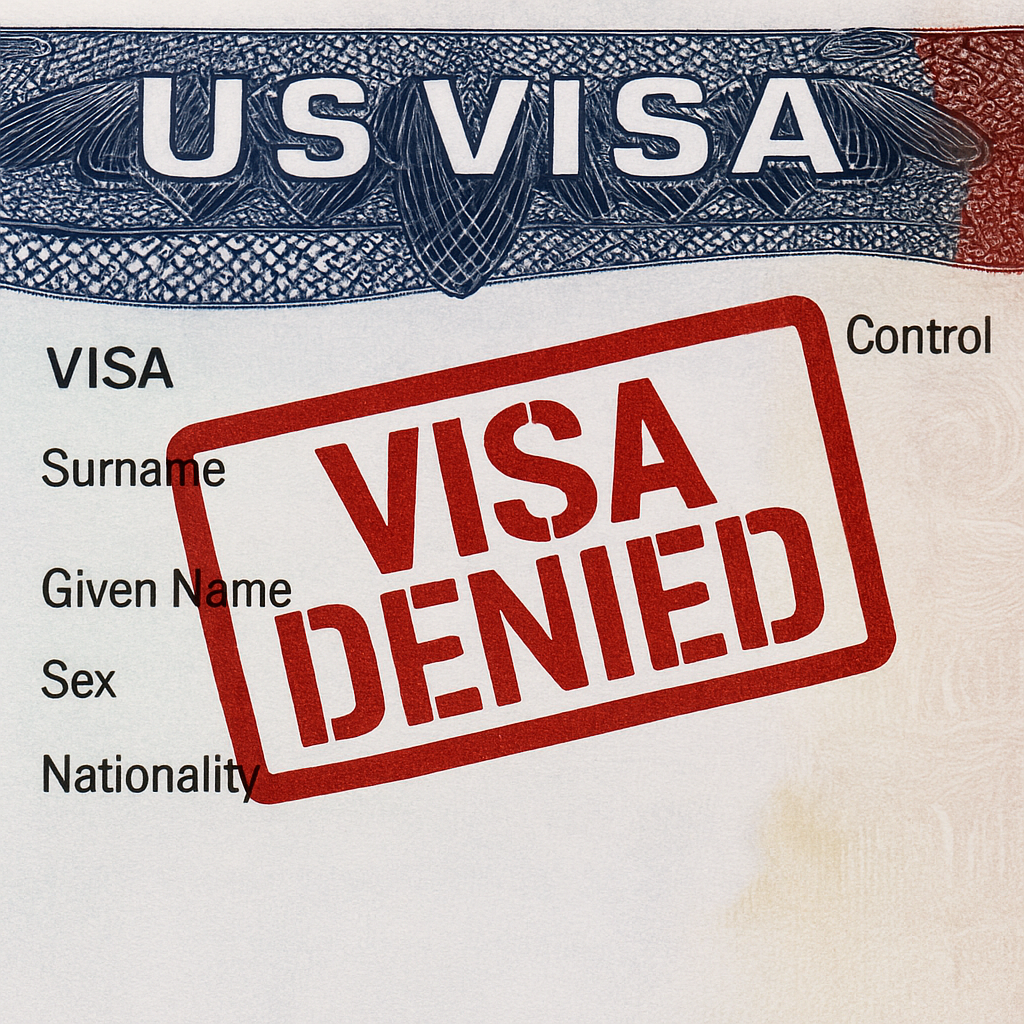
Immediate Impact on Indian Students
Student Reactions
A number of students who had already been accepted by U.S. universities reported the following:
- Canceled the visa interview
- Delayed documentation.
- Confused about whether or not a previously issued visa is valid.
- Concerned about OPT and long-term career opportunities.
I had their admission letter and scholarship offer, and now I don’t even know whether I can enter the country,” states Priya Mehta, a student accepted to Georgia Tech.
Financial and Emotional Impact:
- Many families have spent lakhs of rupees on application fees, test prep and airfare.
- Emotional stress from being denied the opportunity to fulfill dreams.
- Potential to lose a semester, or even a complete academic year.
- The emotional trauma of losing assistantships and scholarship opportunities.
In terms of mental health :
Many students are feeling anxiety and stress from longer than anticipated uncertainty.
- Fear of losing an academic year.
- Fear of being deported or being denied entry.
- The social stigma of ‘failure’ upon returning to India.
Indian Government’s Response: A Resounding Silence?
Modi’s Inaction
In the month of June 2025, the Indian Prime Minister has neither released an official statement nor has he taken any diplomatic action in the aftermath of the crisis despite pressure from student unions and social media shouting about the crisis. There have been no emergency measures, no matter support hotlines, and no clarifications coming from the Ministry of External Affairs.
Comparative Actions from Other Countries
- Canada published a very timely statement on relaxed conditions for impacted students
- UK initiated emergency consultations and updated students on relaxed re-entry requirements.
- Australia issued application fee waivers for international students displaced by Russia.
- India? Silence.

Because of the Indian government’s silence related to the crisis, we have seen:
- Criticism from the opposition.
- Petitions for clarity from student-led groups.
- Public outcry on Twitter and Reddit.
Consequences of Silence
- Declining confidence in Indian diplomatic assurance.
- Loss of India’s soft power and voice on issues of Global student migration.
Opposition and Public Backlash
Political Opposition
Leaders from the Indian National Congress and members of the Aam Aadmi Party have criticized the Modi government: “Our youth are the future of India, and they are being cut down while the Prime Minister watches in silence” said Rahul Gandhi.
Social Media Movements
The hashtags #SpeakUpModi, #StudentLivesMatter, and #JusticeForAspirants are trending. Examples include:
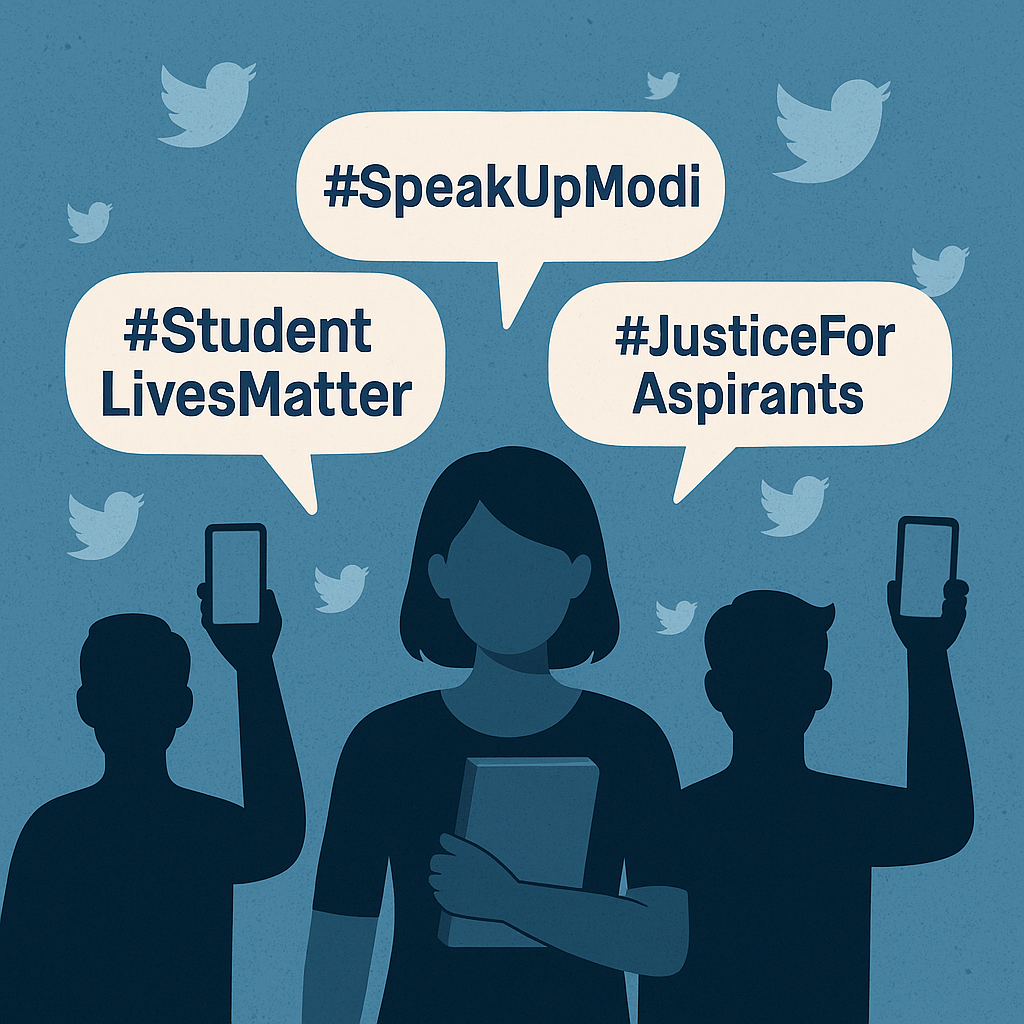
- Personal stories shared by students
- Influencers calling out the government for their lack of response
- YouTubers and podcasters talking about the issues
- Successful petitions have achieved over 100,000 signatures.
The Larger Implications
Impact to India’s Global Reputation
- Significant mistrust of government to respond to criticisms
- Diplomatic consequences for the broader India-U.S.
- Reverse brain drain potential
- Decreased attractiveness for India’s own restricted global outreach campaigns, e.g., “Study in India”.
Long-term Academic Implications
- Shift of Indian students to alternate destinations, such as Canada, Germany and Australia
- Continued exodus of academic talent and revenue for U.S. universities
- Massive cancellations for Indian education consultants
This diplomatic silence may also affect broader trade negotiations. For context, you can read our related article on Tariff Changes in India (2025), which explores ongoing policy shifts affecting India’s international trade posture.
What Needs to Happen Next?
Policy Dialogue must occur with urgency
India must:
- Facilitate diplomatic discussions with U.S.
- Allow for consular support for affected students
- Define long-term implications of visa changes
- issue official statement outlining steps being taken
Establishing Backup Plans
- Develop partnerships with universities in other territories
- Create scholarships and other incentives to keep students in India
- Improve quality of higher education, particularly research infrastructure, within India.
How Students Can Cope Now
What Immediate Actions Can Afffected Students Take?
- Stay in contact with your University’s international office.
- Join Indian student groups for updates and support.
- Have your documentation ready for emergency options.
- Think of alternate destinations with open policies.
Mental Health Help
- Use online counselling services like YourDOST, BetterHelp etc.
- Don’t burn out on social media.
- Continue to explore alternative career development plans.
- Practice mental health hygiene daily: exercise, journal, talk with mentors.
Student Interviews: Real Stories On the Ground
1. Aarav Sinha – I have been admitted to MIT
“I have spent two years preparing and working on everything until the order came out, and then I was on cloud nine. Then my F1 interview was cancelled two days prior to my scheduled interview date.” I chose to defer my admission, but now I’m not sure if I will ever get there!”
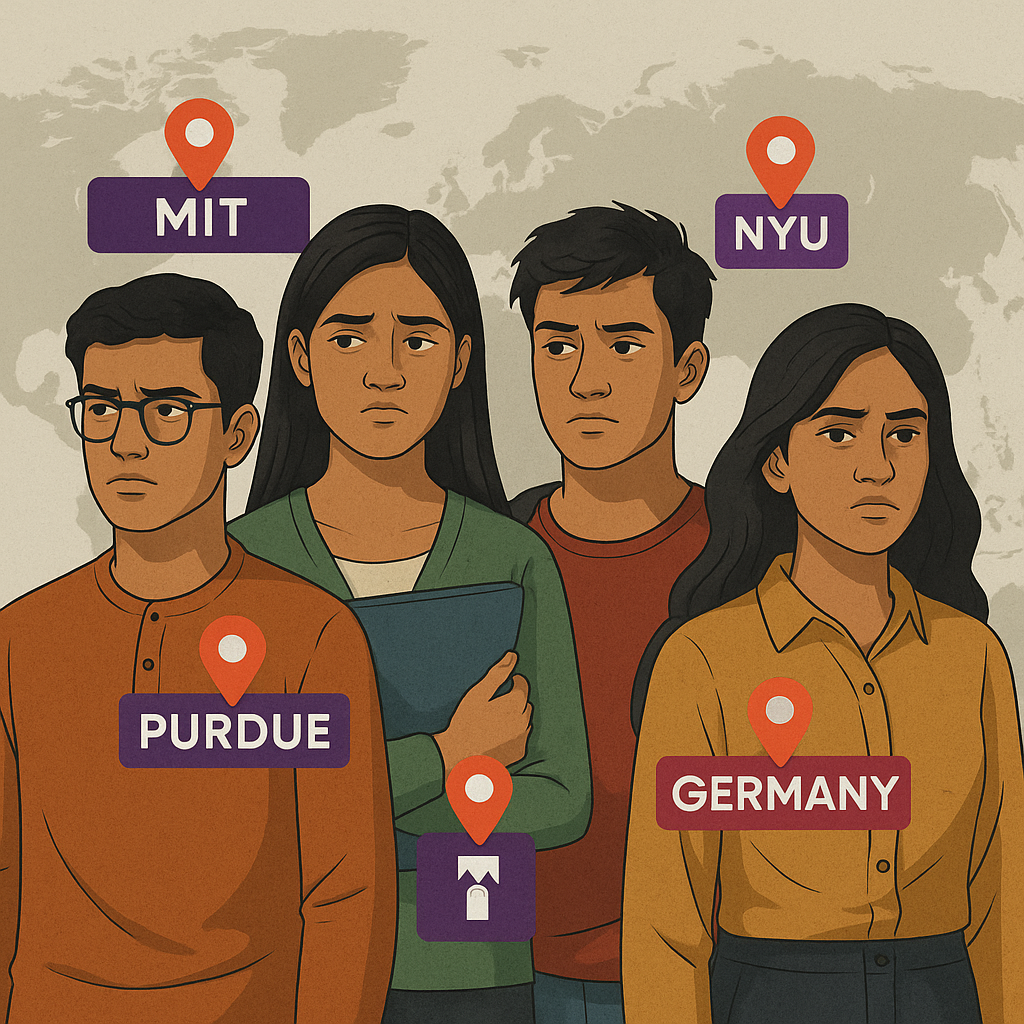
2. Isha Sharma – STEM student at Purdue University
“I am in my second year and was supposed to start OPT with my engineering firm, now this program is suspended. I’m not sure if my visa will be renewed, and I’m scared I will have to go back in the middle of the semester.”
3. Krish Patel – Planning to move to Germany
“Germany’s educational system is more affordable, and at least I wouldn’t be at the whims of potential unstable politics. I just started my application there following this mess.”
4. Tanya Iyer – Deferred offer from NYU
“I was supposed to go this year and start NYU with a full-tuition scholarship. Now with visa blocks and no news from the embassy, I feel hopeless.”
These stories reverberate throughout forums and social communities which drives home the panic and lost opportunity.
A Brief History of India-U.S. Student Visa Development
- 1990s-2000s – Huge boom in Indian stem migration to the U.S. as a result of H1-B and F1 visas
- 2016-2020 – Early signs of restriction in Trump’s first term.
- 2021-2024 – Biden relaxed many restrictions of the visa and Indian admissions surged again.
- 2025 – Trump in his second term makes significant reversal of policy triggering fears.
This history highlights how volatile the environment has ingeneral become and why it is so important to establish strategic partnerships with other countries.
Expert Perspectives
Prof. Radhika Menon, Analyst in International Affairs
“India’s indifference to public outcry indicates weakness. A strong, vocal democratic expression would have strengthened our commitment to student mobility. Silence sends the wrong message.”
Aman Bhatia, Immigration Consultant
“The United States is no longer a dream destination. Today, Canada, Germany, and Japan all offer more viable options. Indian students should take advantage of this opportunity to make their plans more diverse.”
Anjali Deshmukh, Career Coach for International Aspirants
“Students will now need to build flexible career paths with consideration of hybrid learning, internships in different locations, and even domestic opportunities.”
Dr. Sameer Arora, Expert in Education Policy
“India needs to work on world-class institutes with a research focus so that our students don’t seem compelled to look elsewhere.”
So what can India do?
- Establish a diplomatic task force to resolve issues of visa/permitting
- Establish bridging programs with universities in the EU and Canada
- Establish strong domestic alternatives (R&D fellowships, global internships in India)
- Task a student liaison to communicate updates.
Areas of Focus for Students:
- Keep your paperwork as accurate and up to date as possible.
- Develop multi-country admission plans.
- Please speak to alumni and lawyers.
- Be on top of what is happening and keep a positive attitude.
Closing Comments
The 2025 visa restrictions under Trump have opened up another chapter of uncertainty and anxiety for Indian students. What makes this period worse is the lack of both intent and action on behalf of the Indian government! As the world responds to this action, its future leaders have been left voiceless.
It is time for productive diplomacy, openness and diversified academic options. Because borders may prevent knowledge from crossing the border but they should never prevent an ambition.
Indian students deserve more than silence, they deserve solutions.

